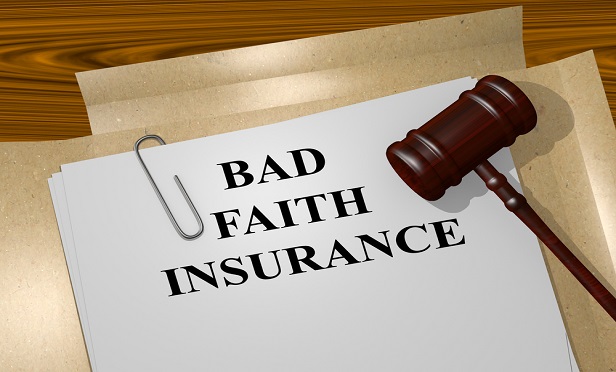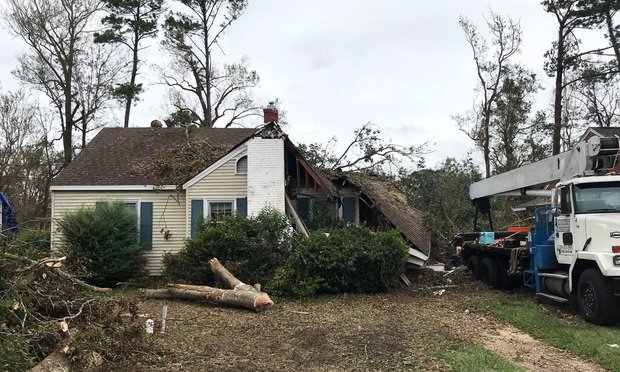This story is reprinted with permissionfrom FC&&S Legal, the industry'sonly comprehensive digital resource designed for insurancecoverage law professionals. Visit the website tosubscribe.
|An appellate court in Arizona has reversed a trial court'sdecision and ruled that an insured could proceed with his lawsuitagainst his insurer for bad faith stemming from, among otherthings, his claim for stolen baseball cards.
|RV property damage coverage
James Duepner purchased insurance on his recreational vehicle(RV) from Geico, including $10,000 of property damage coverage,effective October 8, 2012.
|On October 29, 2012, Duepner's RV was broken into and severalitems were stolen. The next day, he filed a claim with Geico.
|Geico asked for proof of forced entry to confirm that the policyapplied.
|On December 10, 2012, a Geico representative inspected the RVand determined that there was physical damage consistent with aforced entry. The representative estimated the damage to thevehicle at $498.65, just under Duepner's $500 deductible.
|Duepner opted to self-repair the door, and a year later obtaineda third-party estimate of $1,400 to repair the damage. He neversubmitted the estimate to Geico.
|The Geico representative later admitted in deposition that basedon the pictures shown to him, his $498.65 estimate was toolow.
|3 baseball card sets from 1970s stolen
According to Duepner, the items stolen included a plasma cutter,which Duepner valued at $1,100, and three baseball card sets fromthe early 1970s, which he valued at $6,000.
|Geico requested proof that Duepner owned the plasma cutter,which he provided. Geico, however, denied coverage for the plasmacutter, because it was not “normally used in conjunction with” anRV. Mr. Duepner explained that the plasma cutter was used to builda stove for his RV.
|On December 31, 2012, Geico received a letter from Duepnerrequesting a written explanation for the denial of coverage.
|Related: How Geico managed to overturn a $30M insurance badfaith award — for now
|Within the next month, Duepner sent two similar letters to Geicorequesting a written explanation. Having received no response, onJanuary 25, 2013, Duepner called Geico and again requested awritten explanation. On February 5, 2013, after reviewing theclaim, a Geico supervisor noted in an internal document that, basedon the language of the policy, “we have no basis to deny ordisclaim as nothing [states the] plasma cutter would not becovered.” Geico informed Duepner of its decision within the nexttwo weeks.
|Geico also initially refused to cover the baseball cards,asserting that they had “no value unless [Mr. Duepner] ha[d] a[n]appraisal for them” and otherwise had only “sentimental value.” Inresponse, Duepner estimated they were worth between $5,250 and$6,375 based on the Beckett pricing guide, similar items on eBay,and his estimation of the cards' condition when they werestolen.
|Later, Duepner sent Geico a “Price Guide” survey with anapproximate value of the cards.
|Geico consulted its own expert who determined the currentBeckett pricing guide value of the cards was between $3,000 and$6,000 depending on condition but estimated (without explanationand contrary to the values obtained) that the cards would only sellfor $2,400.
||On February 5, 2013, Geico agreed to pay $1,010 for the plasmacutter (although it was determined to be worth $1,100) and $1,000for the baseball cards. Geico then closed the claim, erroneouslyinforming Duepner that the coverage limit on his policy was $5,000and had been met.
|Related: Sports memorabilia: What it's worth & how toevaluate it
|At the time the claim was closed, Geico had accepted coveragefor $5,329.50 in losses.
|Duepner called and left a message with Geico to ask why coveragewas being limited to $5,000 when his policy was for $10,000.
|After two days without a reply, Duepner called again, and Geicoadmitted its mistake and agreed to reopen the claim. In adeposition, the Geico employee responsible stated it was an“oversight” and a “mistake” made because most RV policies carry a$5,000 limit. The Geico employee admitted the error would not havebeen corrected if Duepner had not challenged it.
|During a February 19, 2013 call requesting the claim bereopened, Duepner questioned the $1,000 payment for the baseballcards. In the voicemail closing the claim, a Geico representativestated that “for collecting items, such as baseball cards and such,there is a $1,000 cap.” Duepner asked GEICO to review the $1,000limit determination and again requested a written explanation.
|Geico's representative was “hoping” to get a letter to him by“the end of the month.”
|On April 5, 2013, Duepner called again, asking why he had notreceived anything in writing despite his repeated requests.
|On April 9, 2013, Geico sent a letter to Duepner with abreakdown of all the payments made on his claim and quoting thepolicy's $1,000 limit on “coin collections, stamps, and collectingsupplies.”
|Insured sued Geico alleging bad faith
Duepner sued Geico in January 2014, alleging bad faith. During a deposition, aGeico supervisor admitted the baseball cards were not “coincollections, stamps, and collecting supplies” and that itsinterpretation of the insurance contract had been “a mistake” and“in error.”
|When asked when that determination of error was made, thesupervisor replied “yesterday” while he was reviewing previousdepositions. The supervisor admitted that it was unfair to Duepnerthat it took more than two years, and 14 months of litigation, tocorrect the error or mistake.
|In July 2015, the same supervisor sent a letter to Duepner witha check for an additional $1,500, plus interest, for the value ofthe baseball cards, bringing the total amount paid for the cards to$2,500, slightly more than the insurer's lowest estimatedvalue.
|Duepner moved for partial summary judgment and Geico moved forsummary judgment. The trial court granted Geico's motion and deniedDuepner's.
|Duepner appealed.
|Appellate court: Insured presented sufficient evidence of badfaith
The appellate court reversed, finding that Duepner had presentedsufficient evidence from which a jury could find that Geico hadacted in bad faith.
|In its decision, it explained that, based on the sequence ofevents, Duepner had produced sufficient evidence fromwhich a jury could find Geico liable for bad faith. The appellatecourt conceded that some of the evidence demonstrated “objectivelyreasonable behavior, and Geico did cover some items withoutobjection.”
|Related: Insurance and collectibles: What agents need toknow
|The appellate court added, however, that Geico's “ultimatecoverage of other items resulted only after substantial delay, andefforts on the part of [Mr. Duepner] that a jury could find wererequired by GEICO's undue recalcitrance to pay clearly coveredclaims.”
|The appellate court noted that, for example, there might havebeen “a fair debate concerning coverage for loss of the plasmacutter,” because it might not have been “normally used inconjunction” with the RV. The appellate court observed, however,that that rationale had not been presented until after Geico hadsaid that it would deny coverage without proof of ownership.
|'Lowballed the claim' & 'needless adversarial hoops'
Moreover, the appellate court continued, Geico's handling ofDuepner's claim for the loss of his baseball cards also gave riseto inferences that it “lowball[ed]” the claim and forced Duepner to“go through needless adversarial hoops.”
|According to the appellate court, on this record, “a jury couldfind Geico's actions in attempting to deny coverage and minimizepayment for the baseball cards amounted to bad faith.”
|Therefore, the appellate court reversed the entry of summaryjudgment on bad faith. (The appellate court also concluded that thetrial court had correctly ruled that Duepner was not entitled toproceed with his claim for punitive damages.)
|The case is Duepner v. Government Employees Ins. Co.,No. 1 CA-CV 16-0242 (Ariz. Ct.App. June 8, 2017).
|Steven A. Meyerowitz,Esq., is the director of FC&S Legal,the editor-in-chief of the Insurance Coverage Law Report, and thefounder and president of Meyerowitz Communications Inc. Email himat [email protected].
Want to continue reading?
Become a Free PropertyCasualty360 Digital Reader
Your access to unlimited PropertyCasualty360 content isn’t changing.
Once you are an ALM digital member, you’ll receive:
- All PropertyCasualty360.com news coverage, best practices, and in-depth analysis.
- Educational webcasts, resources from industry leaders, and informative newsletters.
- Other award-winning websites including BenefitsPRO.com and ThinkAdvisor.com.
Already have an account? Sign In







